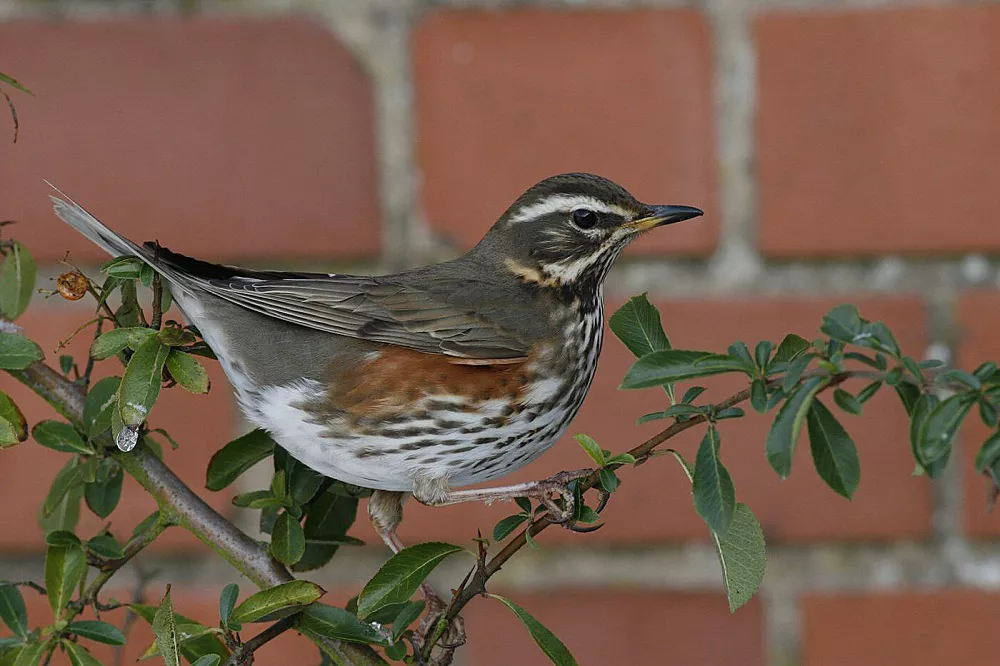The Redwing (Turdus iliacus) is a captivating bird known for its distinct appearance and enchanting song. Found in various parts of Europe and Asia, this migratory thrush species has long fascinated birdwatchers and nature enthusiasts. In this article, we will delve into the characteristics, behavior, and habitat of the Redwing, shedding light on its unique attributes and the role it plays in the ecosystem.
Physical Characteristics:
The Redwing is a medium-sized thrush with a sleek and compact body. It showcases a combination of rich and earthy tones that give it a striking appearance. Key physical characteristics of the Redwing include:
Plumage: The Redwing has a predominantly dark brown to black plumage on its head, back, and wings. Its underparts are pale, with streaks or spots of red or orange on the flanks. The bold reddish-orange color on the underwing and axillaries is a distinctive feature.
Beak: The Redwing possesses a yellow or yellow-orange beak that is slender and slightly curved, ideal for foraging on various food sources.
Eyes: The bird’s eyes are relatively large and typically display a bright yellow iris.
Size: Adult Redwings typically measure around 20 to 24 centimeters (8 to 9.5 inches) in length, with a wingspan ranging from 33 to 34 centimeters (13 to 13.5 inches).
Habitat and Distribution:
Redwings are widely distributed across parts of Europe and Asia. Their breeding range spans from northern Europe, including Scandinavia and Russia, to areas in Siberia. During the breeding season, they inhabit moist woodlands, coniferous forests, and birch-dominated areas.
As migratory birds, Redwings embark on long-distance journeys to escape harsh winters. They undertake impressive migrations to spend the winter months in more temperate regions. They can be found in the United Kingdom, Ireland, Western Europe, and parts of Asia, such as Japan and China.
Behavior and Diet:
Redwings are primarily ground-feeding birds, foraging for a variety of food sources. Their diet consists of insects, earthworms, berries, fruits, and other small invertebrates. During the breeding season, they focus more on a diet rich in invertebrates to provide essential nutrition for their young.
Their distinctive song is a beautiful and melodic mix of whistles and trills. Males often sing from elevated perches to establish territories and attract mates. Redwings are also known for their collective behavior and can form large flocks, particularly during migration and wintering periods.
Conservation and Threats:
The Redwing is not considered a globally threatened species. However, habitat loss due to deforestation and changes in land use can impact their breeding and foraging grounds. Preservation of woodland habitats and the promotion of sustainable land management practices are crucial for the long-term conservation of the Redwing and its ecosystem.
Conclusion:
The Redwing is a captivating bird with its distinctive plumage, enchanting song, and remarkable migratory behavior. As a vital part of the ecosystem, it contributes to seed dispersal and insect control. By understanding the Redwing’s characteristics, behavior, and habitat, we can appreciate the beauty and ecological significance of this fascinating bird. Let us continue to promote conservation efforts and preserve the habitats that sustain the Redwing, ensuring its presence and enriching our natural world for generations to come.


 Facebook
Facebook  Instagram
Instagram  Youtube
Youtube 